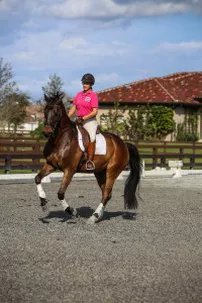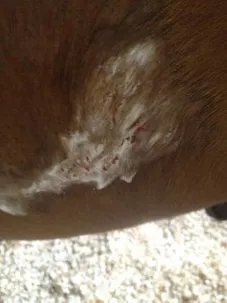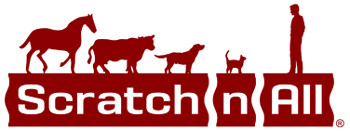Abuse in the Dressage World – Breaking the Silence
Apr 10th 2014
* Author’s note: Cases of abuse can be found in all disciplines but I’m a dressage rider and will only comment on what I have seen.
When I was 16 years old, I had a trainer riding my horse in a lesson; she was schooling canter half pass and was not happy with how my eager-to-please gelding was going about it. She leaped off my horse and started lashing him across the chest with a dressage whip out of anger. I got up off my seat, took the reins from my horse and walked out of the ring with him. She hollered at me “If you walk out of this ring, you are no longer in training with me!” I kept walking. Later that night, I was met with barrage of phone calls between my mother and trainer.
I was training 3 hours away from home, I called my mom to send the truck and trailer to pick my horse up. My trainer was in the “I’m sorry, it won’t happen again” phase, aka I need the extra 2 grand a month you are paying me, and my mother, knowing how stubborn I could be even back then, stated that it was entirely my decision.
Back then I rarely encountered abuse in training programs but always felt strong enough to stand up for my horse. After purchasing Welmingh the desire for success became inflated. Unfortunately my journey to the Grand Prix has been riddled with numerous types of animal abuse. Sometimes to my horse but most often to others. The great debate as a rider is, do you tow the coach line and keep your mouth shut or inform the absentee owner? I wish I had an easy answer to this question but I don’t. Instead I will share an inside look at some of the horrible encounters I have seen along my journey from Canada to Welly World. These are all things I have witnessed personally.
The Journey to Grand Prix is Long

1) Chains under nose bands – I watched a trainer mounted with far too much horse battle it out with double twisted wire snaffles and chains electrical taped to the noseband for submission, which also damages the horses’ ability to smell. Oddly enough, when the owner showed up in town all of this gear disappeared. It was very clear this trainer was not being upfront about her training methods to the owner.
2) Shock collars – yes, the kind you use on your dog. The device was attached to the horse and the trainer holds the remote. This was supposed to encourage the horse to go forward. Lesson after lesson I watched the trainer call it a TENS machine and convince her clients this was a good thing.
3) Spur Marks – This one is pretty obvious, and hard to hide from owners, although owners were informed that the horse scratched itself in a stall on a nail.
Spur Marks

4) Metal Cavesson – similar to the chain under the noseband. A trainer would use this with draw lines to “work on the skeletal structure of the horse to help it build muscle” #what?! Once again, this damages the nerve endings on the horses’ nose and damages its ability to smell. When you walked down the barn aisle every horse in training had a giant bump on their nose from the damage she was doing with it.
5) Riding lame horses – well… they have bills to pay too, right? And since the owners are gone away for months at a time they will never know. To validate it, the trainer would claim that it was rein lame and not a real issue. Ultimately resulting in more vet bills for the poor absentee owner who does not see what is going on.
6) Crazy Bits – From double twisted wire snaffles to some sort of Mexican crazy high ported snaffle, I have seen it all.
7) Weighted Bell Boots – I am on the fence on whether these fit on this list or not. I don’t really know much about them, but I am going to guess that since you can’t just buy them at any regular ole tack store, they are probably not a good thing.
This list is by no means complete for our industry but I wanted to unveil what really happens behind the scenes in dressage. The journey is long and people will do anything to shorten it, to win or to make money. My only regret is not standing up for the horses that were being abused while their owners were not present.
In a world where striving to get to the top was my biggest goal, I felt completely powerless in not knowing what to do other than leave. The bigger question is what should WE do as amateurs when we see this sort of thing happening at our stables?
Susan
Note from ScratchnAll: Providing “safe” enrichment to your horses and other animals is one of the most wonderful ways of showing your love.

